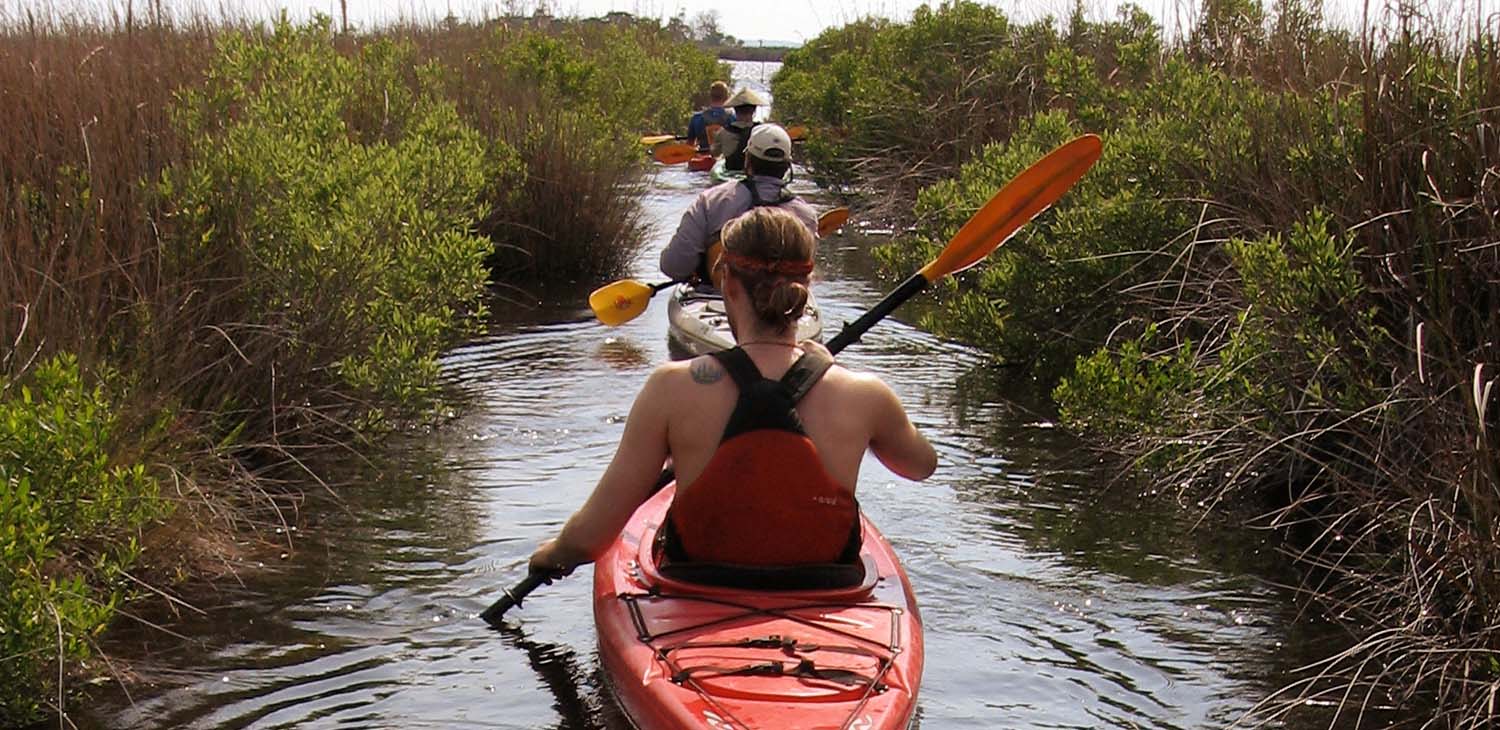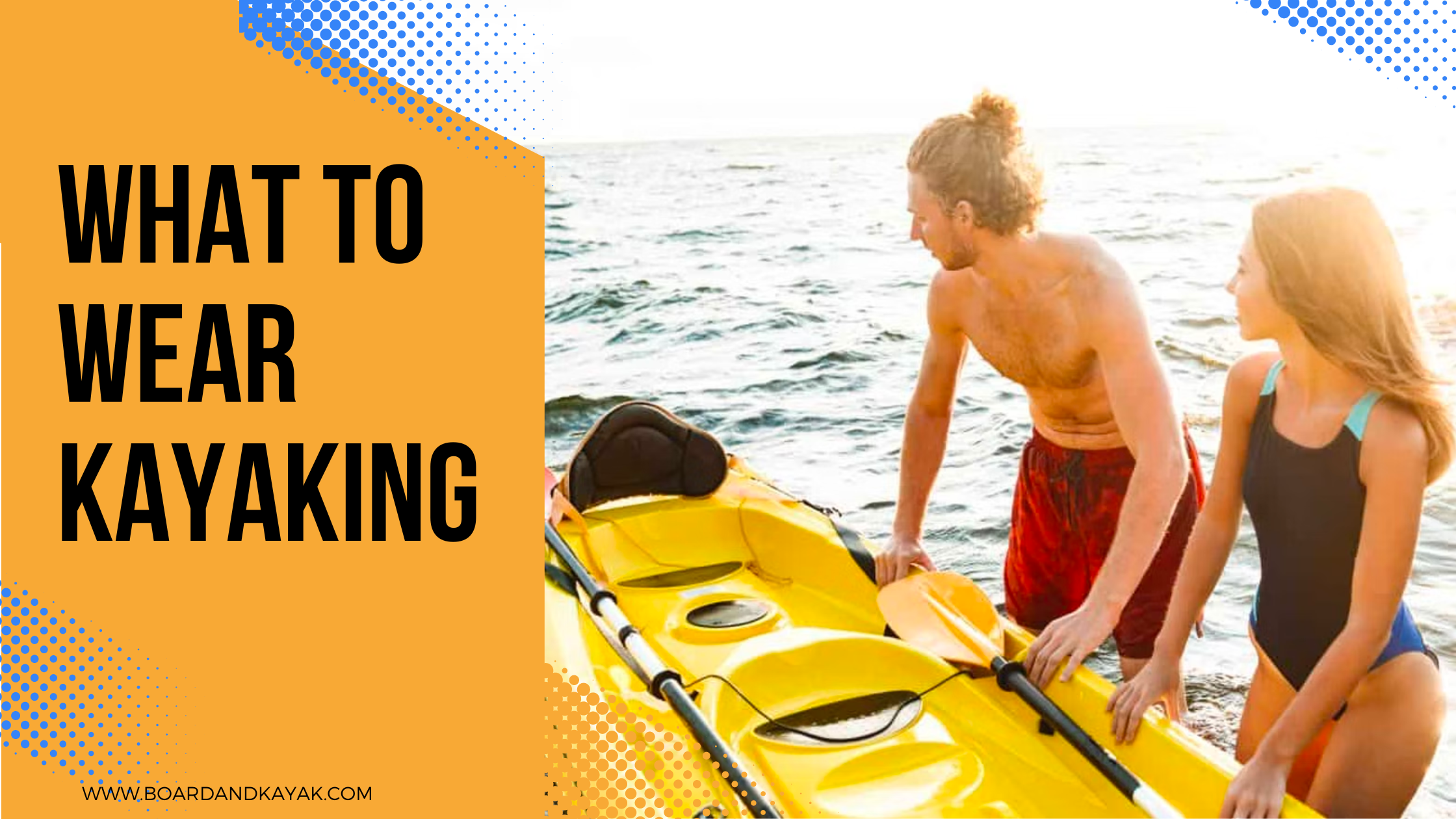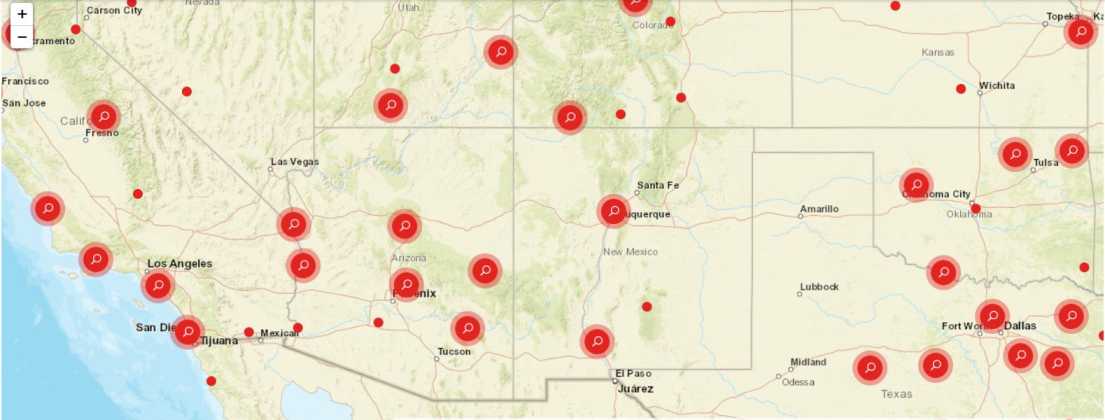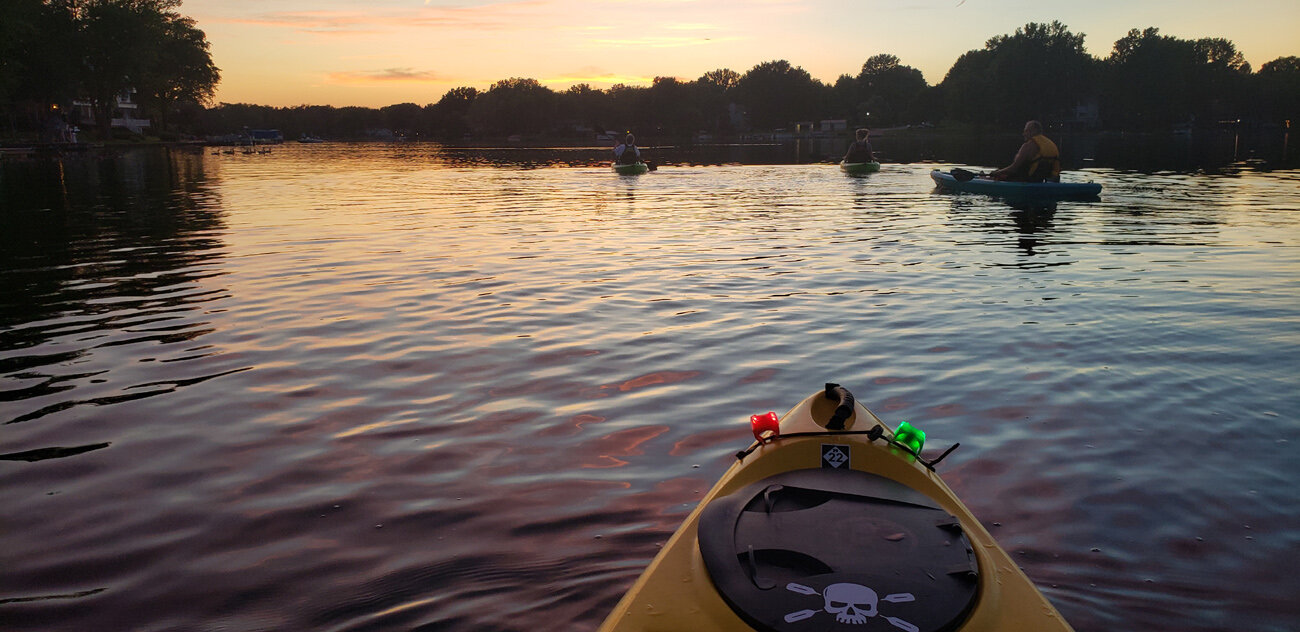
- Alabama
- Alaska
- Arizona
- Arkansas
- California
- Colorado
- Connecticut
- Delaware
- Florida
- Georgia
- Hawaii
- Idaho
- Illinois
- Indiana
- Iowa
- Kansas
- Kentucky
- Louisiana
- Maine
- Maryland
- Massachusetts
- Michigan
- Minnesota
- Mississippi
- Missouri
- Montana
- Nebraska
- Nevada
- New Hampshire
- New Jersey
- New Mexico
- New York
- North Carolina
- North Dakota
- Ohio
- Oklahoma
- Oregon
- Pennsylvania
- Rhode Island
- South Carolina
- South Dakota
- Tennessee
- Texas
- Utah
- Vermont
- Virginia
- Washington
- West Virginia
- Wisconsin
- Wyoming
Best Kayaking In North Carolina
Kayaking In North Carolina
North Carolina includes mountain landscapes, lush woods, wetlands, and coastal beaches. Several waterways make paddling fun for everyone!
North Carolina does not require licenses or registrations for kayaks unless an engine powers them, and the North Carolina Wildlife Resources Commission handles boats` registrations. The Veterinary Defence Society equipment is needed for kayaking in federal waters, and all kayakers must wear life jackets.
Kayaking In North Carolina
North Carolina has several beautiful lakes and rivers to kayak on, but you must observe legal regulations.
What Are North Carolina kayak laws?
- North Carolina Kayaking Laws: North Carolina law considers kayaks and canoes moved only by paddles or oars as non-motorized vessels.
- Non-motorized kayaks and canoes are exempt from North Carolina's registration requirements.
- N.C requires registration of motorized kayaks. Wildlife Resources Commission, which you can do at any of the state's wildlife service agents or the NCWRC's Raleigh headquarters. Decals for registration should be visible on the starboard bow.
- North Carolina license for kayak operators: "Watercraft operators operating a vessel with a motor of 10 horsepower or larger on public waters in North Carolina must have completed a Boating Safety Education course," according to NCWRC. Courses on boating safety instruction are free and available all around the state.
- Age Requirements for Motorized Kayaking Anyone 16 years and older may operate a Personal Watercraft (PWC) as long as they meet the registration and training requirements. When a guardian 18 years or older is present, a person between the ages of 14 and 15 may use a PWC, and both must be properly registered. (Additional restrictions are listed below.)
- Boating Under the Influence (BUI) Law for Kayaking: North Carolina has a BUI law. Most BUI charges in North Carolina are class II misdemeanors. When a person's blood alcohol level is.08 percent or more when they are driving, they are breaking the law. Additional rules and regulations may prohibit alcohol consumption on non-motorized vessels within state park grounds.
- Kayaking Life Jacket Regulations: Every person on board must have a Type I, II, or III PFD, depending on the size of the vessel. Anyone under the age of 13 needs to be wearing a PFD. (For details on kayaking and canoeing, see below)
- Kayak Lights Law: Vessels under 50 meters in length require a white light that can be seen for two miles around them. The required installed lights are waived for vessels under 7 meters, although they should still have an electric torch or lantern on hand. You must use navigation lights on all vessels operating at night during the hours between sunset and morning.
- Kayaking Sounding Devices: Kayaks with a length of fewer than 12 meters are not required to have sounding devices, but they are given the means to send out a sound signal.
Kayak VDS Law: On waters under federal authority, every vessel must have night VDS equipment certified by the U.S. Coast Guard. Personal watercraft (PWCs) must have visual distress signs at night but not during the day.
Paddling And Kayaking In North Carolina
Be sure you know the legal requirements for kayaking in your state before you head out into the water. Kayaks with motors or electricity must be registered before kayakers can use them.
North Carolina licenses kayakers the same way. Operators of motorized kayaks, in particular, must be at least sixteen years old and have completed a kayaking safety education course.
If you plan to go out onto the water after dark, you need a white masthead at least one meter higher for motorized kayaks under twelve meters. White masthead lights for longer kayaks should be at least 2.5 meters long.
In a collision or emergency, non-motorized kayaks must have one operable lamp. Rowing kayaks and paddle kayaks should have a portable light.
If your blood alcohol level exceeds 0.08 percent, you may be fined and jailed, but the law is more relaxed than in other states. All kayaks must be equipped with life jackets, which the United States Coast Guard must approve.
kayak
North Carolina is a beautiful kayaking spot along the Little Tennessee River. North Carolina has some areas where the water is so clear that you will have difficulty believing you are paddling through a mountainous area.
The largest of the natural Carolina Bay Lakes, Lake Waccamaw, is a freshwater lake with a shoreline of 14 miles and a variety of aquatic life unique to this region. Kayakers can access the lake via a kayak ramp to explore this geological mystery!
Do You Need Permits To Canoe Or Kayak in North Carolina?
Oars and paddles exclusively propel kayaks, canoes, rowboats, and rafts. All motorized kayaks, including those equipped with electric trolling motors, must be registered.
Additionally, anyone who owns a personal kayak or canoe without trolling engines or purchases or sells a motorized kayak that is fourteen feet or longer is exempt.
A license is not required to use a kayak or canoe in North Carolina(NC) without an attached motor.
The operator of a motorized PWC of ten horsepower or more must complete a Boating Safety Education course, and you must legally register the kayak. When using the kayak, Boater Education Cards must always be in the person's possession.
kayaking
Youngsters between the ages of fourteen and fifteen may operate motorized PWCs under the supervision of an adult over 18.
The youth must also carry proof of boating safety instruction and personal identification. A unique motorized kayak is illegal for anyone under the age of fourteen.
How Do You Register Your Kayak In North Carolina?
Do you have to register a kayak in NC? As formal proof that a kayak belongs to you and that you are allowed to operate it on state waters, the kayak registration or license acts as proof.
Online renewal of an existing license or registration of a new kayak can be done at a local wildlife services agent or by mail. The North Carolina(NC) Wildlife Resources Commission (NCWRC) is responsible for kayak registration in North Carolina (NC).
Do You Need Lights On Your Kayak In North Carolina?
For motorized kayaks under twelve meters, red and green lights and a white masthead at least one meter high are required. At least 2.5 meters taller, a white masthead light is recommended for kayaks between twelve and twenty meters.
At least one operating lamp or illumination must be exhibited momentarily on kayaks with less than ten horsepower to prevent an accident. Kayaks with rowing or paddles should have a light readily available.
Each kayak must be equipped with navigation lights that meet the standards for its size between dusk and dawn.
Signaling Devices For Kayaking In North Carolina (NC)
Sounding instruments are not required to be carried on kayaks smaller than twelve meters in length in North Carolina (NC). Personal flotation devices (PFDs) can be attached to sounding instruments like whistles.
Every kayak must be equipped with night vision distress signals (VDS) approved by the Coast Guard in federally restricted waters. During the day, PWCs are not required to wear visual distress signals but must have them at night.
A personal watercraft (PWC) cannot be operated between sunset and daybreak, according to the NCWRC (North Carolina Wildlife Resources Commission),
Do You Need Life Jackets To Kayak In North Carolina?
Everyone on a kayak must have a personal flotation device approved by the Coast Guard. All under thirteen must wear Type I or II PFDs unless they are under a deck or enclosed cabin.
Flotation devices must be worn by everyone on a kayak or pulled. Each person in a kayak must wear a USCG-approved Type I, II, or III personal flotation device (PFD) that fits correctly and is wearable.
The requirement to carry personal flotation devices does not apply to kayaks, canoes, sailing boards, racing shells, or rowing sculls.
Kids under thirteen must wear life jackets on any kayaks unless they are in an enclosed area underneath the deck or a cabin. A throwable flotation device of Type IV approval is required on kayaks sixteen feet or longer, and the rule excludes canoes and kayaks that are 16 feet or longer.
Is Alcohol Permitted When Kayaking in North Carolina?
Kayaking could result in a DUI in North Carolina. It is illegal to operate any kayak, motorized or not, while intoxicated by alcohol or drugs.
When kayaking in North Carolina, you can receive a BUI (Boating Under the Influence), the equivalent of a DUI, if you have a Blood Alcohol Content of 0.08 percent.
Safety Tips When Kayaking in North Carolina
A helmet will provide considerable protection in an accident or emergency. Depending on the paddling you'll be doing, you'll need different headgear. You'll need a helmet if you're paddling whitewater.
Wearing a brimmed hat is best for paddlers of all skill levels, and it will protect them from harmful sun rays on hot days and maintain their body temperature on chilly days.
I recommend closed-toed shoes, especially those with padded soles. Paddling in chilly water is easy with Neoprene socks and booties. The best shoes to wear in hot weather are old sneakers, swimming shoes, or closed-toed sandals. You should ensure your feet are protected as much as possible when you kayak.
Safety Tips When Kayaking in North Carolina
While canoeing and kayaking, consider wearing protective footwear. You could risk being injured by rocks, shells, marine life, or glass.
Do You Need Lights On Your Kayak In North Carolina?
It is always good to have fresh water with you in your canoe or kayak, even if you will only be in it for a few minutes. A combination of heat and wind often causes paddlers to become dehydrated.
You will also burn a lot of energy, so carry a snack to avoid feeling light-headed.
Purchase a prepackaged first-aid kit in most stores, or bring your homemade equipment. You can store it on a kayak in a dry box or your dry bag if you have one.
Sunglasses, sunscreen, and lip balm are essential on frigid days. The sun has serious health consequences even when it isn't scorching outside, and lip balm will relieve your discomfort and protect your lips from the wind.
What Are Good Kayaking Spots In North Carolina?
Located in Western North Carolina, the Little Tennessee River is a hot spot for bio variety, and the best way to see it might be with a mask and snorkel. The crystal clear waters make it easy to imagine swimming around a tropical coral reef.
From above, most people enjoy rivers by fishing or floating (both suitable methods), but seeing the river from below reveals colorful fish, freshwater mussels, and even a giant salamander.
What Are Good Kayaking Spots In North Carolina?
There are excellent swamp and eastern hardwood ecosystems along the Lumber River, a wild and scenic river in south-central North Carolina. Canoes can be put-in at twenty-four road crossings, giving you plenty of opportunities to observe various animals such as deer, mink, ducks, and even alligators.
In the upper stretches of the river, which are ideal for birdwatchers, you can see the endangered red-cockaded woodpecker. There are many other unusual species here, such as pine barrens, treefrogs, river frogs, and gigantic yucca skippers.
In south-central North Carolina, Lake Waccamaw has the name of the baby plants that grow nearby, such as charming and red bays. The lake may have been filled with meteorites, according to some speculation.
Several unique species of flora and animals exist in this region because of the neutralizing effect of the limestone rock on the usually acidic water.
Visit the nearby Green Swamp preserve after kayaking around the lake to see three species of carnivorous plants growing in the beautiful fire-dependent pine savannas.
Alligator River National Wildlife Refuge
The Albemarle Peninsula in eastern North Carolina is home to the Alligator River National Wildlife Refuge. Alligator River National Wildlife Refuge was established in 1984 to protect the rare pocosin wetlands and their wildlife. The vegetation in Pocosin wetlands is stunted, shrubby, and grows on thick layers of peat. Swamp forests and marshes are also protected within the refuge. Alligator River National Wildlife Refuge is home to large populations of black bears, wintering waterfowl, river otters, and other wildlife species. Red wolves are also only found at the refuge.
Alligator River National Wildlife Refuge
French Broad River
The French Broad River is an excellent place for outdoor sports. From whitewater rafting to gentle canoeing, river outfitters offer guided trips along the 200-mile-long waterway. Largemouth bass, brown and rainbow trout, and catfish are all found in the French Broad River. There are now parks, artist studios, and other businesses on the Asheville riverfront. About 70 miles of French Broad River in Western North Carolina begins west of Rosman in Transylvania County and ends at the Tennessee border. French Broad River flows northward from its headwaters through Brevard, Asheville, and Hot Springs into Tennessee; it forms the Tennessee River.
Cape Fear River And Beach State Park
Carolina Beach State Park borders Carolina Beach on the western side of the Cape Fear River. Cape Fear River is a triangle of land called Pleasure Island, which the Atlantic Ocean surrounds to the east, and by Snow's Cut to the north, part of the Intracoastal Waterway.
The North Carolina coast
The North Carolina coast. In North Carolina, the Crystal Coast extends 85 miles from Cape Lookout National Seashore, which includes 56 miles of protected beaches southwestward to the New River. Summer is a popular time for tourists and second-home owners to visit the Crystal Coast.
The North Carolina coast
Merchants Millpond State Park
Merchants Millpond State Park offers a combination of tropical swamps and hardwood forests adorned with giant bald cypress trees, beech groves, Spanish moss, and exotic wildlife. You can have a unique paddling experience by renting a canoe or bringing your own. Campgrounds, primitive backpacking sites, and canoe-in campgrounds are available for families and groups. A visitor center and picnic grounds surround the scenic pond, along with nine miles of hiking trails. Bike trails are open on some trail segments. You can fish from the outer banks or launch a small kayak from the ramp (trolling motors only).
Where Can You Rent A Kayak In North Carolina?
Charleston, South Carolina. The best place to kayak in North Carolina, In downtown Beaufort; Beaufort Kayak Tours offers a salt marsh ecological tour at low tide and an informative paddle through the salt marshes. You'll see a sampling of the marine life in our waters by casting a net, and if the weather is nice, they'll stop at a sandbar for a swim.
The dolphin ecology tour introduces visitors to the salt marsh habitat where these magnificent animals live during high tides. The group proceeds into the bigger waters of the Fripp Inlet in search of resident Bottle-nose dolphins and learns about their biology and ecology.
If you've never tried kayaking before, this could be a great way to start! RFRR carries many kayak brands and designs. Spending time on the river is one of the best ways to enjoy it! You can also relax while tubing and do nothing but float.
If you've never tried kayaking before
Many chairs have cup holders, cooler tubes, and neck rests. Strengthening your arm, shoulder, and core is fun and challenging, and this is particularly thrilling for experienced kayakers.
Is a full moon your favorite sight? As the moon rises on the river, being one with nature on the kayak is an unforgettable experience. Rocky Forest River Run in north Carolina offers evening tours to enjoy the moonlight and stars at your leisure.
Conclusion
After completing Kayaking In North Carolina, it's time to hit the water. Jump in your kayak and explore North Carolina's rivers, streams, sounds, and waterways!



![Kayaking in Trout Creek, Montana [2026 Guide]](https://shared-bucket-websites.s3.amazonaws.com/Trout-Creek,-Montana-1651787642041)






